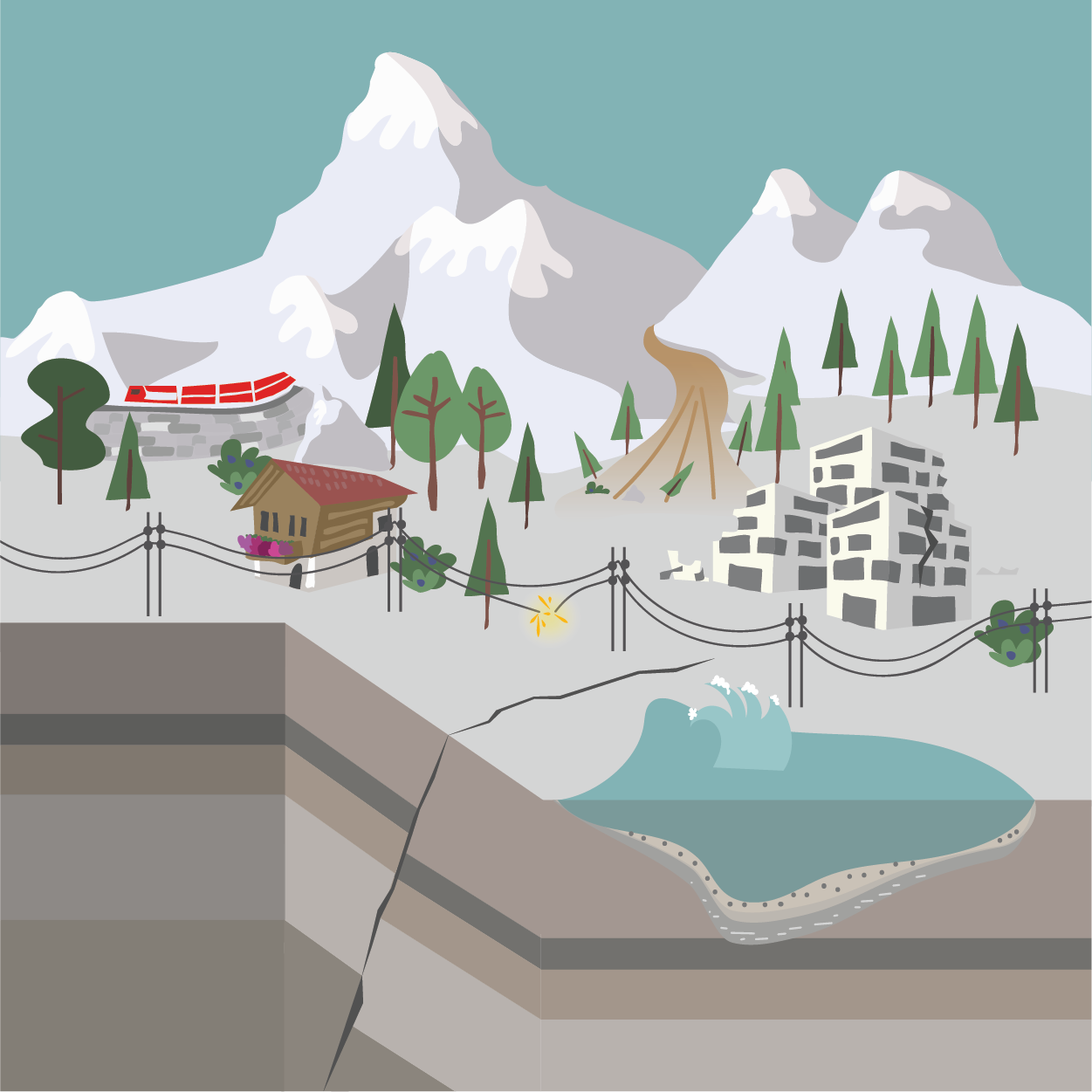Earthquake hazard and risk section
The earthquake hazard and risk section supports the SED in its mission to mitigate earthquake risks. This section develops and regularly updates local and national hazard and risk models in probabilistic and deterministic frameworks, and contributes to the European models. This typically includes all model components from earthquake catalogues, active faults, seismogenic source models, earthquake rate forecasts, ground motion modelling and estimation, local amplification models, exposure and vulnerability of the built environment, consequence models, uncertainty quantification, technical integration, and software development.
The latest models are the earthquake risk model for Switzerland (ERM-CH23), built upon the national seismic hazard model (SUIhaz15) and a national soil amplification model, a local high-resolution risk model for the canton of Basel-Stadt (ERM-BS24), and the European Seismic Hazard and Risk Models (ESHM20 and ESRM20), released in 2022. The section focuses on creating useful, understandable, and accessible products for diverse stakeholders, including the public, cantonal and federal governmental agencies, and engineers.
The section integrates seismic hazard products into Swiss engineering practices, such as the Swiss building code SIA 261 and the dam regulations. This includes implementing the latest national seismic hazard model, defining elastic response spectra, soil classification, de-aggregation and waveform databases. They also participate in developing national regulations such as those for local seismic hazard assessment and developing local seismic hazard maps (microzonation). The Swiss Federal Nuclear Safety Inspectorate (ENSI) also relies on their site-specific studies.
In close collaboration with the monitoring, alerting and analysis section, the group studies earthquake-induced phenomena, including the triggering of rock-fall, landslides, soil liquefaction, and lake tsunamis caused by the failure of sediment slopes in lakes. They analyse the response of these specific surficial geological structures to ambient vibrations and earthquake ground motion, estimate their volumes and internal structure, and model the process and consequences of sediment and slope failures.
In addition, the section engages in teaching and outreach, helping to raise awareness about earthquake risks and mitigation strategies. It collaborates with various universities and participates in public lectures, making sure that research findings reach a broad audience.
Professor Dr. Donat Fäh heads the section, which is divided into three research groups.
